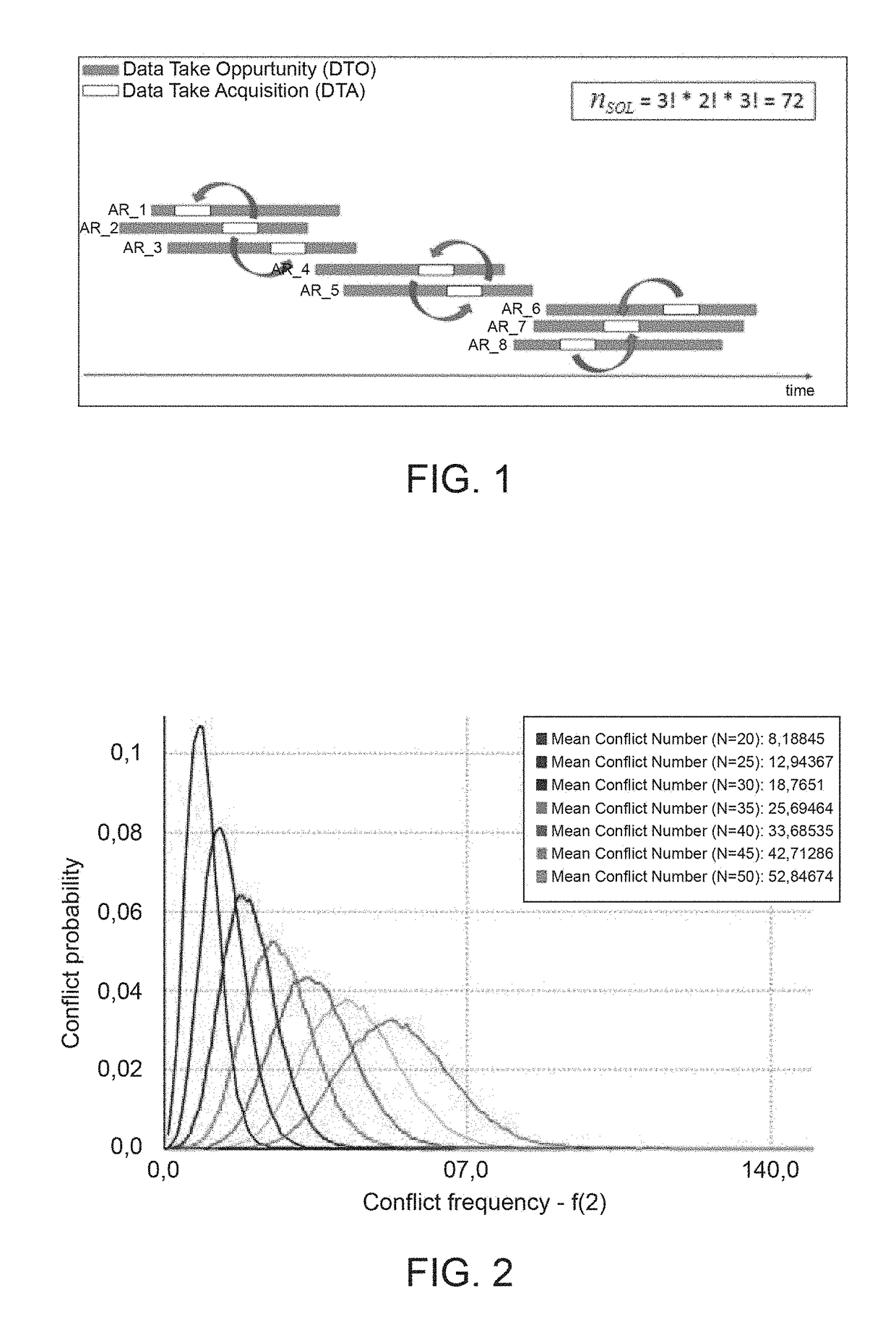Innovative satellite scheduling method based on genetic algorithms and simulated annealing and related mission planner
a technology of genetic algorithms and satellite scheduling, applied in the field of earth observation, can solve the problems of difficult to estimate the complexity of the plan a priori, and restrict the search to a more restricted number, and achieve the effect of large internal diversity
- Summary
- Abstract
- Description
- Claims
- Application Information
AI Technical Summary
Benefits of technology
Problems solved by technology
Method used
Image
Examples
Embodiment Construction
Definitions
[0137]The following description of the present disclosure will refer to several mission planning elements related to satellite missions. Thence, for the sake of description clarity, conventional definitions of said mission planning elements are provided hereinafter:
[0138]a “Scheduling Session” represents the available time interval exploited by a Mission Planner (MP) for an optimal scheduling of the acquisition and download tasks according to existing constraints;
[0139]the “Mission Horizon” (MH) represents the period of interest of the scheduling activity (nominally, 24 or 48 hours);
[0140]an “Operational Window” (OW) is a sub-portion of the MH and is a continuous time interval allocated for the acquisition and / or uplink and download activities; an OW can include a “Planning Window” (PW) for the acquisition of image data, an “Uplink / Downlink Window” (UW or DW), or a combination of them;
[0141]a “Programming Request” (PR) represents an input user request, including acquisiti...
PUM
 Login to View More
Login to View More Abstract
Description
Claims
Application Information
 Login to View More
Login to View More - R&D
- Intellectual Property
- Life Sciences
- Materials
- Tech Scout
- Unparalleled Data Quality
- Higher Quality Content
- 60% Fewer Hallucinations
Browse by: Latest US Patents, China's latest patents, Technical Efficacy Thesaurus, Application Domain, Technology Topic, Popular Technical Reports.
© 2025 PatSnap. All rights reserved.Legal|Privacy policy|Modern Slavery Act Transparency Statement|Sitemap|About US| Contact US: help@patsnap.com



